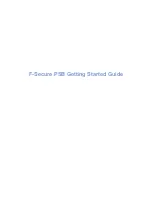
Chapter 4 Functions of ReplicationControl
186
[End message]
Umount
Normal End
YYYY/MM/DD hh:mm:ss
disk_number ld_name
type
volume_name
path
Description
iSM13221: Resetting drive letter (drive:) (volume_name) has succeeded.
Message output when a drive letter or an NTFS folder name is
deleted automatically
YYYY/MM/DD hh:mm:ss:
Start/End time (Year Month Day Hour Minute Second)
disk_number:
Physical disk number
ld_name:
Logical disk name
type: OS
type
volume_name: Mount
point volume name
path:
Drive letter or path name mounted on the NTFS volume folder
accessed by users
iSM13221: Resetting drive letter (drive:) (volume_name) has succeeded.
Message output when a drive letter or an NTFS folder name is
deleted automatically
[Execution Conditions]
To perform Unmount, the following conditions must be satisfied.
(i)
The target volume is registered in the volume list.
(ii) The target volume is in the Read/Write-available state.
(iii) Specifying a volume of a dynamic disk or a GPT-format partition disk is not allowed.
(iv) When the volume to be unmounted is being used by another application, unmount operation may
be terminated abnormally. In this case, to cancel reference or update by another application
forcibly, execute the CHKDSK command with /F /X specified.
(v) On Windows 2000, when the
-offline
option is specified, or if the volume to be unmounted is LV,
the access restriction of the disk (logical disk) is changed to in the Not Ready state. Therefore,
if a volume on the disk with multi-partition configuration is unmounted, pay attention to the
operation procedures because all volumes (partitions) on the target disk are in the state where
reference and update are disabled.
(vi) If
the
-offline
option is specified, or if the volume to be unmounted is LV, only one mount point
(drive letter or NTFS folder name) needs to be set in the target volume. The volume to which no
mount point is set or multiple mount points are set cannot be unmounted.







































